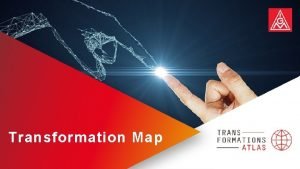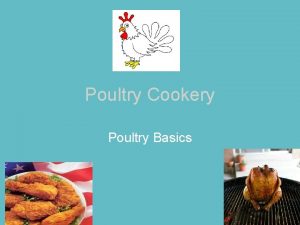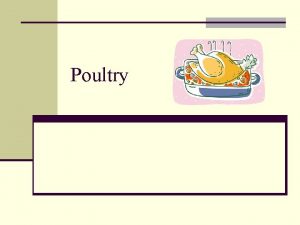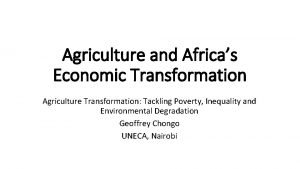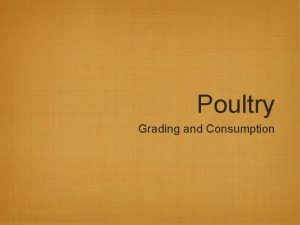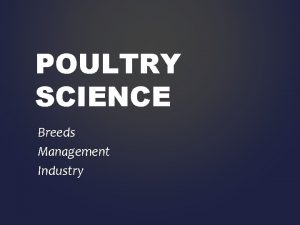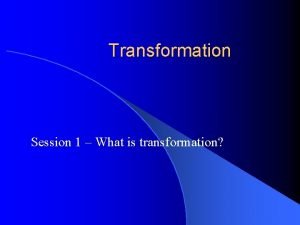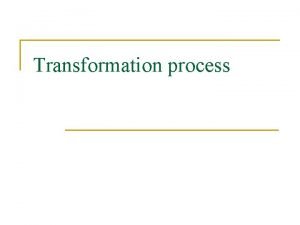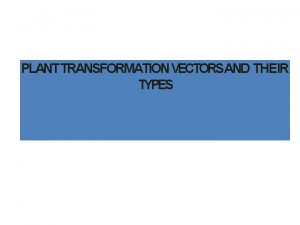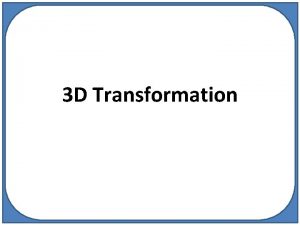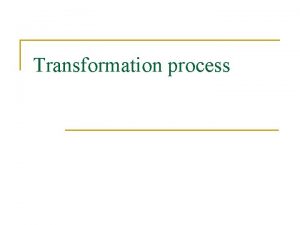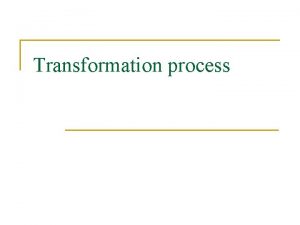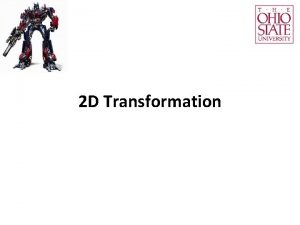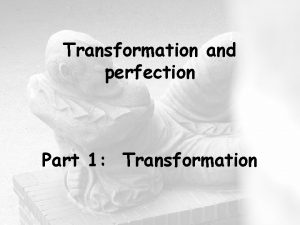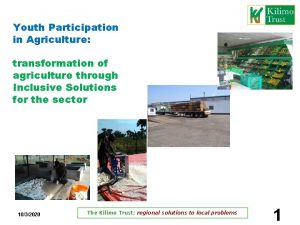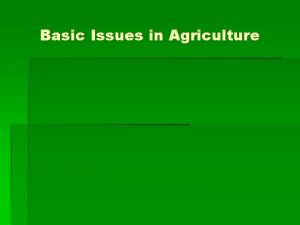TRANSFORMATION IN AGRICULTURE THE POULTRY INDUSTRY Developing Poultry



















- Slides: 19

TRANSFORMATION IN AGRICULTURE THE POULTRY INDUSTRY Developing Poultry Farmers’ Association (SAPA) Presented by Mr Moses Modise On 17 September 2010

Agricultural policy and the Poultry Industry • Fairly limited tariff protection leads to rising imports • Bound Rate for poultry is 80%, Applied Rate is 27% • Eggs essentially not protected

Agricultural policy and the Poultry Industry The fruits of democracy…

Agricultural policy and the Poultry Industry • Global industry , global standards • Local industry mostly to global standards

Market dynamics Local consumption • Local consumption: – 1960: 2 kg pppa – 1975: 13 kg pppa – 2009: 31 kg pppa – Mostly because the real price of chicken has reduced by 15% over the period 1975 to 2009

Market dynamics Local consumption: § Poultry continues to display a positive growth trend 31, 5 31, 8 31, 0 27, 9 30, 7 21, 0 20, 3 19, 9 20, 8 21, 0 20, 7 22, 0 22, 9 23, 6 Poultry 13, 0 2, 2 60 …. . 75 …. . 90 … 96 97 98 99 00 01 02 03 04 05 Estimated per capita consumption of poultry meat kg person per annum 06 07 08 09

Market dynamics Local producer prices

Market dynamics Local consumption • Chicken is a logistics business • Efficiency from scale • South Africa is ⅔ urbanised and the majority need to be fed, not to feed themselves • Money transfer market in most rural areas – remittances – Various social grants • LSM split biased towards lower LSM’s in rural areas • Lower LSM’s spend up to 70% of income on food

Market dynamics Local consumption • • Retail driven Frozen product dominates IQF approximately 50% of all chicken sold in SA Single site farm with one batch per farm, i. e. 7, 5 batches per year • Retail want (52 to 104) deliveries per week from few suppliers. – Up to 21 deliveries per week per supplier for fresh product and – Up to 3 deliveries per week per supplier for frozen product – And large deliveries to central warehousing • Small farmers excluded by retail model • Live sales not as financially sustainable

Market dynamics Eggs • • More than 50% sold informally No complex cold chain requirements Variable pack- or selling sizes Better suited to income dynamics of our developmental state • Lack of strong egg eating habit restricts growth of sector

Poultry Industry And Transformation – Large scale (what is large? ) • Ownership of capital • Contract production of basic product – Small scale (what is small? ) • • • Access to resources Price Availability Technical skills Lack of ready market

Land reform And the Poultry Industry • Industry mantra “Small footprint, big impact” • Land not usually a limiting factor • Demand for contract growers often available even without title (economic value is the contract, not the asset) • Finance for small producers difficult, because of poor financial performance of small businesses • Small producers need long term support

Economic Model • SA structured as an industrialised nation • SA NOT an agrarian society, just one with many dispossessed people • Long term intervention designed for economic inclusion in the industrial model • Short term poverty alleviation can be assisted with poultry and other agricultural interventions • Poverty alleviation is NOT agriculture - agriculture is a business

Role of the State in Market Creation • State supply contracts to - Hospitals - Prisons - Police - SANDF - etc • Small quantities to central warehouses • Bulk supply to caterers at state institutions • Will cost more that imported product currently mostly used for the market segment

Role of the State in Market Creation • Will ALWAYS cost more i. e. permanent price support intervention required from state • Top-up payments to small producers (SAPA can assist with top-up formula calculation) will be required • A more progressive intervention than grants as it will help lead to social inclusion • Model can apply to any commodity whose perishable nature can be managed

Agricultural Support • Green box measures can be 10% of agricultural GDP – we use very little of this • Land has biological potential which is the key restrictor • SA will never be optimal for most agricultural production because of - biological potential limitations - climate - logistical density (4 times larger that our GDP on a weighted basis)

Agricultural Support • The rural economy can come from three things: - manufacturing (limited) - mining (site specific) - AGRICULTURE • Without agriculture there would be almost no rural economy • Supporting agriculture will slow urban migration • Housing pressure would be reduced (poor people may only claim 1 RDP house yet have 2 houses – town and rural)

Agricultural Support • Former homelands can NEVER be agriculturally sustainable - biological potential restriction - population density • Former homelands CAN use limited agricultural production for poverty alleviation purposes • Poultry imports at local producers price equivalent would be approximately R 2, 5 billion per annum • Could create at least 7 000 additional jobs if imports severely curtailed • Therefore a viable community of approximately 35 000 South Africans could be formed

Developing Poultry Farmers’ Association Moses Modise 011 795 2051 076 482 0819 modise@sapoultry. co. za Thank you
 Betriebspolitik
Betriebspolitik Vẽ hình chiếu vuông góc của vật thể sau
Vẽ hình chiếu vuông góc của vật thể sau Frameset trong html5
Frameset trong html5 Thế nào là mạng điện lắp đặt kiểu nổi
Thế nào là mạng điện lắp đặt kiểu nổi Mật thư tọa độ 5x5
Mật thư tọa độ 5x5 Lời thề hippocrates
Lời thề hippocrates Chụp tư thế worms-breton
Chụp tư thế worms-breton Vẽ hình chiếu đứng bằng cạnh của vật thể
Vẽ hình chiếu đứng bằng cạnh của vật thể Quá trình desamine hóa có thể tạo ra
Quá trình desamine hóa có thể tạo ra Khi nào hổ mẹ dạy hổ con săn mồi
Khi nào hổ mẹ dạy hổ con săn mồi điện thế nghỉ
điện thế nghỉ Các châu lục và đại dương trên thế giới
Các châu lục và đại dương trên thế giới Các loại đột biến cấu trúc nhiễm sắc thể
Các loại đột biến cấu trúc nhiễm sắc thể Nguyên nhân của sự mỏi cơ sinh 8
Nguyên nhân của sự mỏi cơ sinh 8 Bổ thể
Bổ thể độ dài liên kết
độ dài liên kết 101012 bằng
101012 bằng Thiếu nhi thế giới liên hoan
Thiếu nhi thế giới liên hoan Chúa yêu trần thế alleluia
Chúa yêu trần thế alleluia Fecboak
Fecboak
